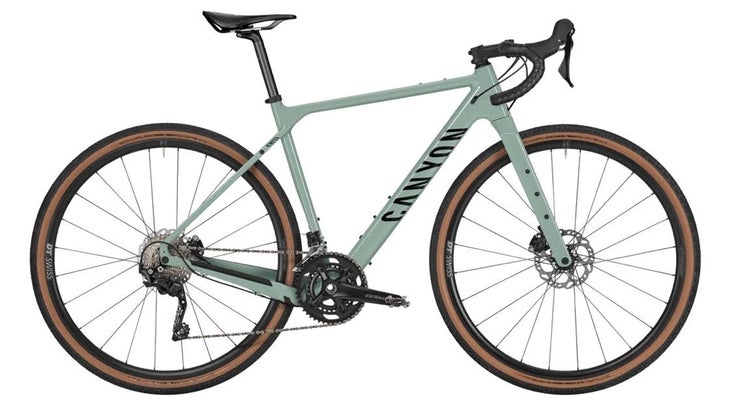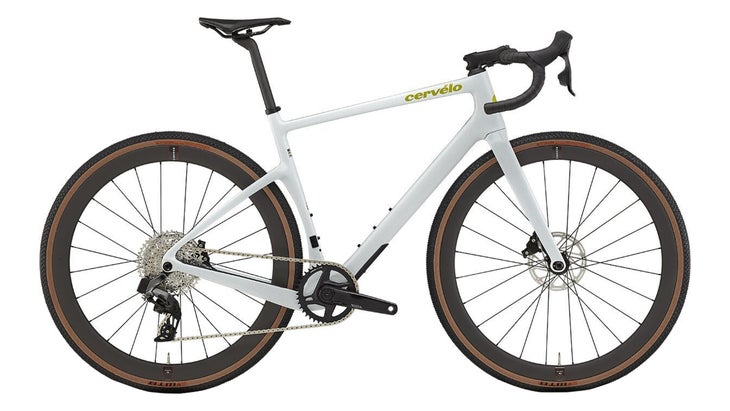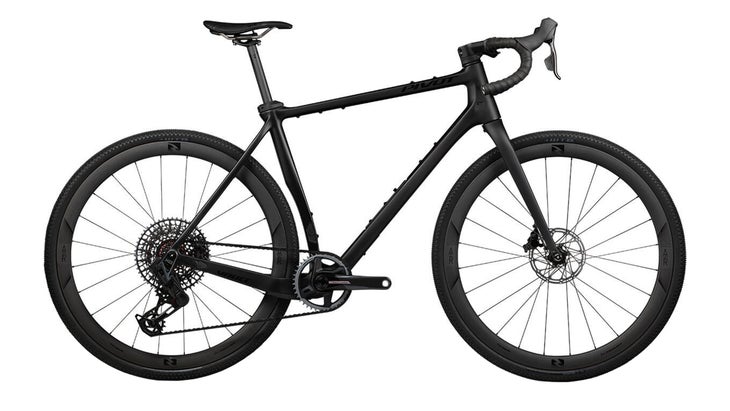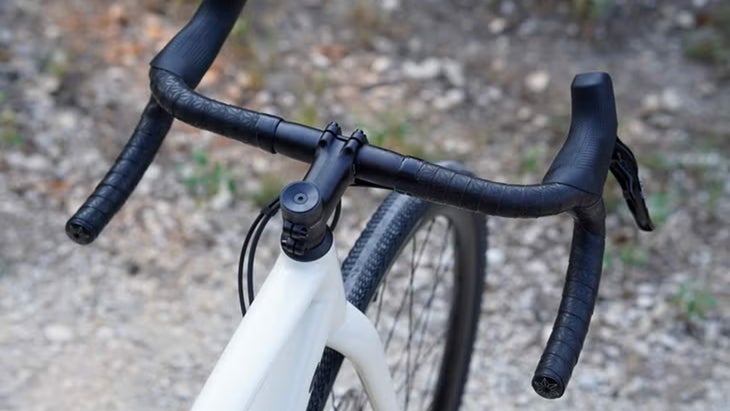Gravel bikes have changed considerably over the past couple decades. While some modern gravel bikes are essentially road bikes with more tire clearance, others are optimized for bikepacking with lots of gear. Because there are so many options, finding the right gravel bike can be a challenge. So we put in hundreds of miles of testing to bring you the top tier of gravel bikes available right now. The list below is the result of testing bikes from the most popular bike brands down to the small builders.
Our top pick, the Specialized Crux DSW, impressed us with its uniqueness and personality. For an aluminum bike, it offers impressive versatility—it moves effortlessly from gravel to singletrack to dirt to road and everywhere in between. Our other picks include a budget-friendly option for those just getting into gravel riding, a high-performance bike, and a versatile all-rounder.
At a Glance
Editors’ Choice
Specialized Crux DSW
$2,600 at Specialized
Test Bike: Specialized Crux DSW Comp
Weight: 20.2 lbs/9.2 kg
Pros and Cons
⊕ Same geometry as pricier carbon Crux
⊕ Simple to work on as a home mechanic
⊕ Available in both frameset and complete bike options
⊗ Expensive for an aluminum bike
Aluminum gravel bikes have a rap for being entry-level models, but that’s not the case with the Specialized Crux DSW, a premium gravel bike that happens to have an alloy frame.
Specialized purports its new Crux DSW gravel bike is the lightest aluminum gravel bike frame ever made. That’s a heady claim, but at 1,399 grams for a 56 centimeter frame, the Crux weighs just about one pound (or approx. 400 g) more than most traditional carbon gravel bikes Better still, the Crux DSW shares its geometry, tire clearances, and overall look with the more premium carbon fiber Crux.
As with the carbon fiber Crux, the Crux DSW is a relatively simple bike compared to the competition. There is no internal cable routing that makes swapping handlebars and stems more expensive. Further, the standard-fitment seat post is easy to replace and upgrade down the line, making this bike a comparative breeze to maintain for the home mechanic. And for the hands-on among us, the Crux DSW is available as a frameset you can build up to your specs, just like the carbon Crux.
Like the carbon Crux, there’s hardly anything proprietary going on in the DSW. There’s no internal cable routing at the handlebars; rather, brake hoses and shift cables are routed through the down tube and seat stays to accommodate both mechanical and electronic shifting. There’s a round, 27.2-millimeter diameter seat post with a standard seat post clamp. A BSA-threaded bottom bracket complements the rest of the system.
It’s a quick-handling bike that feels similar to the carbon version, taking just a touch more work to keep going in a straight line than a more traditional gravel bike. It doesn’t feel quite as settled on gravel roads when compared to something like an aluminum Canyon Grizl, which we attribute largely to geometry that is equally suited to riding comfortably on the road as it is on smooth to moderate gravel roads. At the same time, however, that geometry means the bike feels spry in tight singletrack, with a front wheel that doesn’t wander too much through ruts and roots.
Yes, the Specialized Crux DSW costs more than other aluminum gravel bikes, but there’s a sense of personality and polish across the bike that comes with the higher price point. You feel every bit of the bike buzzing along on dirt roads, eager to get you moving faster. We also found ourselves pushing the bike more than we do some other bikes, not only because we felt comfortable in its handling, but because at $2,699, we didn’t feel like we had to baby it like the top-of-the-line models in the Crux lineup.
Read the full review here

Best Under $2,000
Canyon Grizl
$1,899 at Canyon
Test Bike: Canyon Grizl 6 RAW
Weight: 24 lbs/10.89 kg
Pros and Cons
⊕ Same confidence-inspiring handling of more expensive Grizl models
⊕ Loads of tire clearance
⊕ Excellent build specs for the price point
⊗ Feels heavy on the uphills
Folks may have their reservations about Canyon Bicycles, but there’s no denying the value for money the German bike brand offers on its bikes, particularly at the entry level. If you’re just getting into gravel cycling, or you’re looking for a reliable yet reasonably-priced gravel bike with big tire clearance, the Canyon Grizl 6 RAW is a smart pick.
The Canyon Grizl 6 RAW is built around an aluminum frame with carbon fork, offering a modern, adventure-ready gravel geometry that’s meant to feel stable and planted on everything from fast dirt roads to technical singletrack. It rolls on 45-millimeter Schwalbe G-One Bite tires mounted to DT Swiss C 1850 wheels, and the frame has clearance for tires up to 50 millimeters wide, making it a strong option for riders heading off the beaten path.
The Shimano GRX 400 2×10 drivetrain brings reliable performance and a wide gear range, ideal for long days and mixed-surface adventures. Canyon includes plenty of practical touches too, including mounts for racks, fenders, and top tube bags, as well as triple mounts on the fork legs.
At 24 pounds, it’s a fair bit heavier than the other bikes on this list. You feel every bit of that extra weight on climbs, and the bike doesn’t have the snappiest feel under acceleration. On the flipside, it’s surprisingly confident on descents and performs well on rugged routes, especially for a bike at this price.
Whether you’re bikepacking, gravel commuting, or just getting into dirt for the first time, the Canyon Grizl 6 RAW is a solidly spec’d option that’s tough to beat without spending quite a bit more.

Best Performance Gravel Bike
Cervelo Aspero
$4,400 at Backcountry $4,600 at Mike’s Bikes
Test Bike: Cervelo Aspero Rival XPLR AXS 1
Weight: 18.5 lbs/8.39 kg
Pros and Cons
⊕ Quick handling without feeling nervous
⊕ Snappy feel when sprinting
⊕ Solid components package
⊕ More comfortable ride than before
⊗ No fender mounts
While the new, second-generation Aspero looks a whole lot like the first-generation, trust us: the updates make the Aspero a far better gravel bike than before.
The most obvious change is that the cables and hoses are tucked away and routed through the headset. While internally routed hoses and cables can be hard to access and maintain, this system is fairly user-friendly since the cables run externally from the handlebar and under the stem before entering the bike. The new Aspero also uses a threaded bottom bracket and the new SRAM Universal Derailleur Hanger (UDH) that standardizes derailleur hanger replacements, two additional updates that make home maintenance a little easier.
Watch: 5 Things You Need to Know About the Cervelo Aspero
The previous-generation Aspero reminded you at every moment that it wanted to go fast with its stiff, unforgiving ride. This new Aspero soaks up the bumps from gravel far better than the previous bike, allowing riders to stay seated without being jostled off their saddles. Add in the well-rounded build package of the Aspero Rival XPLR AXS bike we tested, and this latest iteration is a wholly improved bike that is much more approachable for the average rider.
If there’s any glaring weakness to the Aspero, it’s the 700c x 44 millimeter tire clearance. That’s less than most other gravel bikes on the market these days. In our testing, however, we found that a 47–millimeter tire fit without an issue. Given that this is a speedy performance gravel bike that’s not designed for mountain bike trails, it was easy to forgive this shortcoming.
If you’re looking for a performance-oriented gravel bike and your gravel roads are more smooth dirt, not singletrack, then the Cervelo Aspero is a good pick.
Read the full review

Best Quiver Killer
Pivot Vault
$6,749 at Backcountry $5,650 at Mike’s Bikes
Test Bike: Pivot Vault Team Force XPLR AXS w/ Carbon Wheels
Weight: 18.3 lbs/8.3 kg
Pros and Cons
⊕ Stable, comfortable ride
⊕ More configurable than almost any other gravel bike on the market
⊗ Odd frame and component sizing
The recently updated Pivot Vault gravel bike is boring on paper, but we loved it nonetheless. The new Vault moves away from being as race-focused as its predecessor and towards being a gravel bike for everyone.
Its new-found versatility is what makes the updated Vault stand out. For those who want adventure, you’ll find room for up to 700 x 50 millimeter tires and a suspension-corrected fork. Riders can choose to build their Vault with cables fully hidden for a clean look, or run cables externally to make the bike easier to repair and maintain.
Even on the size small, there’s room for four bottles, with three in the main triangle plus one on the downtube; there’s a bento box, as well as a downtube storage hatch to store snacks and tools. Add in the new SRAM Universal Derailleur Hanger (UDH) that standardizes derailleur hanger replacements as well as fender mounts, and the new Pivot Vault is ready for anything
The geometry is upright with a long wheelbase and a stable feel. The combination of having plenty of exposed seatpost, and whatever magic is in the layup really sucks the bumps up. The Vault only comes with 40-millimeter tires, but it feels like there must be more rubber down below, and, at a bit over 18 pounds, it climbs just fine.
Our only beef with the bike is the odd frame and component sizing. This means you’ll likely need to spend a bit more time and money to swap out the stem and handlebars to ensure the bike fits you before your first ride. Do a bit of work to make sure the bike fits you comfortably, however, and you’ll find a bike that can do just about anything you’d ever want to with a gravel bike.

How to Choose a Gravel Bike
What Is a Gravel Bike?
A gravel bike is designed first and foremost to be at its best when riding on a variety of surfaces. That doesn’t just mean gravel, but dirt roads and pavement as well. A large percentage of gravel bike riders will take their bikes on singletrack which might be better suited to a mountain bike as well. In short, a gravel bike needs to be a lot of things to a lot of people.
Sure, a gravel bike might look a whole lot like a road bike, as they both have drop bars and relatively compact frames. But a gravel bike will have a gravel tire, typically ranging from 38 millimeters all the way up to 50, with some gravel bikes going even wider than that. Gravel tires vary in tread, though most gravel bikes will have some sort of tread on them in an effort to balance rolling resistance and grip in loose conditions. An increasing number of gravel bikes come with damping or suspension. Most of the time, that comes from an extra flexy seat post or handlebar, but some gravel bikes feature a suspension fork to add traction, grip, and comfort too.
Finding the right gravel bike for you can be a challenge with so many varieties. Here are our tips to ensure you find the right bike.
What Should I Look For on a Gravel Bike?
A gravel bike isn’t just a road bike with wider tires. The geometry is quite a bit different, favoring straight-line stability through the bumpy surfaces of dirt and gravel roads. Rider positioning is going to be more upright as well. The result is a bike that can roll through just about anything you may encounter on a road.
Gravel bikes typically have a number of mounts. Two water bottle cage mounts are certain, with a third at the bottom of the bike nearly guaranteed. Most gravel bikes will have a pair of mounts for a top tube bag to carry snacks on rides. Many will have fender mounts, while other will have rack mounts to carry gear.

Most gravel bikes will feature a shorter stem and wider drop handlebars that flare out. Further, most gravel bikes will come with a 1x drivetrain. A 1x drivetrain has a single chainring up front and a wide-range cassette out back. This ensures riders are quickly able to find the right gear simply by hitting the upshift or downshift levers.
The latest gravel bikes have started to split into two categories: performance gravel bikes and adventure gravel bikes. Performance gravel bikes ditch most of the rack and pack mounts, shed weight, and tend to have quick er handling. Adventure gravel bikes double down on bike packing, with more mounts, wider tires, a more stable ride, and a focus on durability.
What Exactly Do I Need to Budget For?
Most of the bikes we’ve tested qualify as high-end bikes, costing as much as a decent used car. However, the trickle-down effect is very real, and so there are some fantastic gravel bike values at a more affordable price point. Knowing what you can spend will give you a great idea of what’s available to you on the market today.
Buying a gravel bike isn’t just buying a bike—you also need the right accessories. At a minimum, you’ll need a quality set of bike lights and a well-fitting helmet in the name of safety. Further, you’ll need to budget for a decent set of pedals, and matching shoes if you want to use clip-in style pedals rather than a more accessible flat pedal.
The clothes themselves also make a difference. Finding a properly fitting set of bib shorts and a jersey can make your ride that much more comfortable if you decide to wear them. And that’s just the tip of the iceberg: repair kits, maintenance items, and more are worth budgeting for.
How Do I Choose The Right Size of Gravel Bike?
Your typical gravel bike will come in a range of sizes to fit riders of all heights. Most new gravel bikes will come with a size range to help you figure out what size of bike you need. This size range is usually expressed in centimeters, though some brands use a XS to XL.
Once you figure out what size of gravel bike you need (we recommend going to your local bike shop—more on that below), you’ll want to give the bike a test ride. That means standing over the top tube of the bike (sometimes referred to as a crossbar) comfortably with both feet flat on the ground. The top tube can touch you, but it’s better if it doesn’t.
The right size of gravel bike will place your torso and arms at roughly a 90-degree angle from your torso without feeling uncomfortable. Your knees will have a slight bend to them at the bottom of your pedal stroke. Most importantly, the bike will feel comfortable to maneuver around.
Of course, all of this advice is only amplified by going to a trusted bike shop. Having another set of eyes to help you find the correct size bike will ensure your money is well-spent. They’ll help you determine the right bike for you based on your riding experience, flexibility, and needs, and they’ll help you determine proper sizing for things like handlebars, saddles, and even your frame.
How We Test
- Number of Testers: 5
- Number of Products Tested: 33
- Longest Testing Bike Ride: 280 miles (450 km)
These gravel bikes—ranging from entry-level to top-spec bikes with weights matching high-end road bikes—were chosen to be a well-rounded preview of the best bikes on the market today. Sure, we tested gravel bikes from all of the major bike brands, but we also made sure to test the small brands as well.
Our reviews were performed all over the world by five dedicated testers, with a vast majority of those miles on roads and trails we know best, from Dallas to Patagonia to Arizona. Riding across such varied terrain by riders of different skill levels and needs means we’re well-suited to understanding what parts of a gravel bike can frustrate, what makes a bike good, and what makes a bike truly stand above the competition.
Testing includes riding local loops, big days out, group rides, and everything in between. It means living with them day-to-day, maintaining them, and building them to learn more about their ins and outs.
Meet the Testers
Alvin Holbrook
Alvin Holbrook is a tech editor for Velo. He covers road, gravel, and e-bikes after nearly a decade in the bike industry. In addition, he uses his background in urban planning to cover stories about active transportation, policy, tech, and infrastructure through the Urbanist Update series. He currently lives in San Antonio, Texas with his wife and an ever-growing stable of bikes and kitchen utensils.
Josh Ross
Josh Ross is a senior tech editor for Velo. He hails from the Pacific Northwest, but when it’s time to ride, hot and dry is better than cold and wet. He will happily talk for hours about the minutiae of cycling tech but understands most people just want things to work. He is a road cyclist at heart and doesn’t care much if those roads are paved, dirt, or digital. Although he rarely races, if you ask him to ride from sunrise to sunset, and beyond, the answer is always “yes.”
More Gear Reviews
The Best Mountain Bikes of 2025
The Best Bike Helmets
The Best Bike Packs
